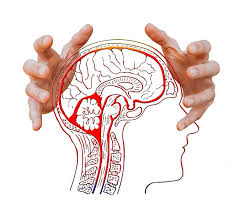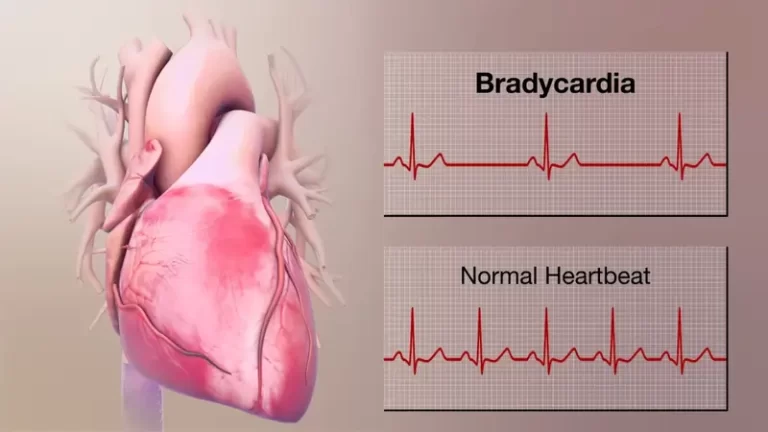Cerebral Edema
Table of Contents
What is a Cerebral Edema?
Cerebral edema develops when fluid accumulates around the brain, increasing intracranial pressure. Symptoms may include headaches, nausea, dizziness, and more.
Swelling or inflammation is a normal response to injury. Edema, or swelling caused by trapped fluid, can occur anywhere in the body. If oedema develops in the brain, it can lead to serious complications.
Cerebral oedema can reduce the flow of blood to the brain. Blood transports oxygen to the brain, which it requires to function. A lack of oxygen in the brain can cause brain cell damage or death.
Intracranial pressure (ICP) can affect specific areas of the brain or the entire brain, depending on the underlying cause.
Cerebral edoema can cause permanent damage and, in some cases, be fatal.
Causes of Cerebral Edema
Several factors can cause brain swelling. They include:
Traumatic brain injuries (TBIs).
A TBI damages the brain. Physical contact and falls can cause brain swelling. In more severe cases, a TBI can fracture the skull, rupturing blood vessels in the brain and causing swelling.
Stroke.
Certain types of strokes, particularly ischemic strokes, can cause brain swelling. An ischemic stroke happens when a blood clot forms near the brain, preventing it from receiving blood and oxygen. This can lead to brain cell death and swelling in response to the injury.
Infection.
Some microbes can cause diseases and conditions that cause swelling and inflammatory reactions in the brain, especially if not treated.
Examples of these illnesses are:
Meningitis is a type of infection that causes inflammation of the brain’s covering. It can be caused by bacteria, viruses, other organisms, or certain medications.
Encephalitis is an infection that causes the brain to become inflamed. It is typically caused by a group of viruses and is sometimes transmitted through insect bites.
Toxoplasmosis is caused by a parasite. Toxoplasmosis primarily affects foetuses, young infants, and people with compromised immune systems.
A subdural abscess (empyema) occurs when an area of the brain becomes abscessed or filled with pus, usually as a result of another illness such as meningitis or a sinus infection. The infection spreads quickly, causing swelling and preventing other fluids from leaving the brain.
Tumours.
Brain tumours can increase pressure on specific areas of the brain, causing the surrounding brain to swell.
High altitudes:
While researchers are unsure of the specific causes, brain swelling is more probable to occur at elevations above 4,900 feet. This type of brain edoema is commonly linked to severe acute mountain sickness (AMS) or high-altitude cerebral edoema (HACE).
Other causes of brain swelling are:
- Unhealthy drug use
- Viral infections.
- Carbon monoxide poisoning
- about animal bites, including those from poisonous reptiles and marine animals.
Types of Cerebral Edema
There are four major types of cerebral edema. The type of condition a person may be suffering from is determined by the cause.
Cytotoxic This type of cerebral edoema occurs when sodium and water accumulate within cells, causing cellular failure. The primary causes of this type of edoema are traumatic brain injury, stroke, and liver failure.
Vasogenic This is caused by a breakdown in the blood-brain barrier, allowing fluid to leak and pressure to build up inside the brain. The most common causes of this type of edoema are stroke, TBI, and brain tumours.
Interstitial Obstructive hydrocephalus, or the accumulation of cerebrospinal fluid that widens the brain’s ventricles and increases pressure in the brain, is the primary cause of this type of edema. Obstructive hydrocephalus is caused by a genetic defect, developmental disorder, meningitis, tumour, traumatic brain injury, or haemorrhage.
Through osmosis, “Cells suffer from water both inside and outside, and water can pass through the semi-permeable membranes, “This process is known as osmosis. Sometimes electrolytes accumulate inside the cell, causing a high concentration of water to enter the cells.”
Symptoms of Cerebral Edema
The symptoms of cerebral edema differ greatly depending on the cause and can be extremely painful. Patient age, brain size, and edoema location can all influence symptom severity.
Symptoms of cerebral edema can include:
- headache and nausea.
- vomiting
- dizziness
- Memory problems.
- difficulty speaking.
- seizures
- Vision loss
- Neck pain.
- difficulty moving
- Loss of consciousness
- Intestinal obstruction (volvulus or intussusception)
- Numbness or weakness, either generalised or localised.
- Double vision is caused by being unable to fully move one of your eyes in a specific direction.
- Bulging in the soft spots of a baby’s skull
Risk factors of Cerebral Edema
Diabetes is a risk factor for developing cerebral edema because it increases your risk of developing diabetes-related ketoacidosis or infections that cause edema. Children with diabetes face a higher risk than adults. People with cancer or a weakened immune system are prone to experience brain edoema.
Diagnosis
The doctor’s diagnosis of brain swelling is based on the symptoms and suspected cause. Common exams and tests used for diagnosis include:
- Head and Neck Exam
- Neurological exam
- CT scan of the head to determine the extent and location of swelling.
- MRI of the head to determine the extent and location of swelling.
- Blood tests to determine the causes of the swelling
- Lumbar puncture
Treatment of Cerebral Edema
The goal of cerebral edema treatment is to reduce fluid accumulation and swelling in brain tissues. Medication and surgery are two of the primary treatment options.
Medication
Depending on the severity of your condition and the underlying cause, your medical professional may prescribe medication to reduce swelling and prevent blood clots.
- Corticosteroids.
- Mannitol and other diuretics.
- Hypertonic saline.
- Sedatives.
- Fever reducers.
- Blood thinners.
Osmotherapy
When your brain swells, it stores extra fluid. Osmotherapy is a technique for drawing water out of the brain. This is accomplished using osmotic agents such as mannitol or high-salt saline. Osmotic therapy also promotes better blood circulation. This will help to reduce swelling and ICP levels in the skull.
Hyperventilation
Certain doctors may use controlled hyperventilation to lower your ICP. Hyperventilation causes you to exhale more than inhale, which reduces the amount of carbon dioxide in your bloodstream. The proper blood flow in your brain is dependent on carbon dioxide. Controlling this process lowers blood flow in the brain, lowering ICP.
Hypothermia
Another treatment method is to induce hypothermia. Lowering body temperature slows metabolism in the brain and can reduce swelling.
Despite some success stories, controlled hypothermia is still being researched.
Ventriculostomy
This is a more invasive procedure that involves removing fluid from the brain. A doctor will make a small incision in the skull and insert a tube to drain. This method will reduce ICP pressure.
Surgery
In severe cases of cerebral edoema, surgery may required to relieve ICP. This surgery could involve removing a portion of the skull or the source of the swelling, such as a tumour.
Prevention
Preventing cerebral edema entails taking precautions to protect your head. To reduce the risk of edoema, you can take the following measures:
- See the primary care given regularly for check-ups.
- Control long-term illnesses like diabetes and high blood pressure.
- Take your medications as directed.
- Take precautions when participating in sports that may result in concussions.
- Wear seat belts in cars and helmets when riding bikes or motorcycles.
- Get the necessary vaccines and practise other preventive healthcare measures.
- Practice infection prevention measures, such as avoiding sick people and thoroughly washing your hands.
- If you smoke, try to quit. Smoking increases the risk.
Complication
Typically, surgical complications include infection and bleeding.
Medications can also cause side effects. Corticosteroids may result in a variety of adverse reactions, involving:
- Increased appetite and weight gain.
- Reduced resistance to infection.
- Acne.
- Mood changes.
- Nervousness.
- Bruise more easily.
Mannitol and other diuretics may cause the following side effects:
- Dehydration.
- Kidney damage.
Summary
Cerebral edema is a condition in which fluid develops around the brain and raises intracranial pressure. It can cause serious complications and can lead to permanent damage or even death. Causes include trauma, stroke, infection, tumours, and high altitudes. There are four major types of cerebral oedema: cytotoxic, vasogenic, interstitial obstructive hydrocephalus, and osmosis.
Symptoms can include headaches, nausea, dizziness, memory problems, seizures, vision loss, neck pain, difficulty moving, loss of consciousness, intestinal obstruction, numbness or weakness, double vision, and bulging in the soft spots of a baby’s skull.
Diabetes is a risk factor for developing cerebral edema, and people with cancer or a compromised immune system are more likely to develop the condition.
Diagnosis is based on symptoms and suspected cause, and treatment options include medication, osmotherapy, hyperventilation, hypothermia, ventriculostomy, and surgery. Preventing cerebral edema involves regular check-ups, controlling long-term illnesses, taking medications, participating in sports, wearing seat belts, getting vaccines, practising infection prevention measures, and quitting smoking.
FAQs
Severe cerebral edema can be fatal if left untreated due to compression and herniation of the brain and brainstem. Significant cerebral edoema can cause diffuse brain injury, trigger seizures in some cases, or result in large areas of ischemic brain tissue.
Diabetes is a risk factor for developing cerebral edema because it increases your risk of developing diabetes-related ketoacidosis or infections that cause edema. Children with diabetes face a higher risk than adults.
Vasogenic cerebral edema is the influx of fluids and substances into the brain through an ineffective blood-brain barrier (BBB). This is the most common type of brain edoema and is caused by increased permeability of capillary endothelial cells, with the white matter being the most affected.
Because cerebral edema and intracranial pressure are not visible from outside the body, your doctor will order additional tests. This will include blood tests to determine the underlying cause of the edema, as well as imaging tests like a CT scan or MRI to determine where the edema is located in the brain.
A headache.Neck pain or stiffness.Nausea or vomiting.Dizziness. respiration is irregular. Visual loss or change.Memory loss.Inability to walk.
References
- Natale, N. (2023, January 9). What Is Cerebral Edema? Symptoms, Causes, Diagnosis, Treatment, and Prevention. EverydayHealth.com. https://www.everydayhealth.com/edema/cerebral-edema/
- Kandola, A. (2023, June 19). Cerebral edema: Everything you need to know. https://www.medicalnewstoday.com/articles/322475
- Anthony, K. (2018, September 29). Cerebral Edema. Healthline. https://www.healthline.com/health/cerebral-edema
- Cerebral edema. (2024, February 14). Wikipedia. https://en.wikipedia.org/wiki/Cerebral_edema
- Professional, C. C. M. (n.d.). Cerebral Edema (Brain Swelling). Cleveland Clinic. https://my.clevelandclinic.org/health/diseases/cerebral-edema-brain-swelling
- Roybal, B. (2008, October 23). Brain Swelling. WebMD. https://www.webmd.com/brain/brain-swelling-brain-edema-intracranial-pressure
- Nehring, S. M. (2023, July 3). Cerebral Edema. StatPearls – NCBI Bookshelf. https://www.ncbi.nlm.nih.gov/books/NBK537272/#:~:text=The%20most%20basic%20definition%20of,%2C%20osmotic%2C%20and%20interstitial%20causes.







